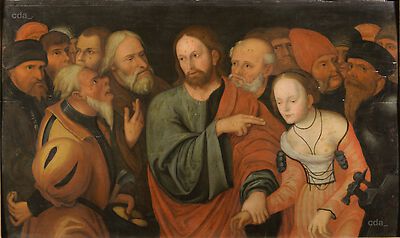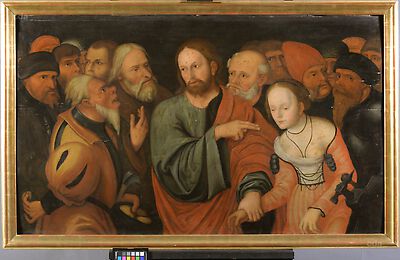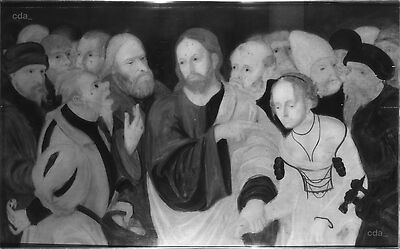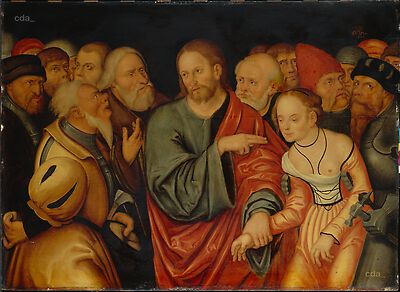Support
The support consists of two c. 2 cm thick hardwood planks, probably oak. The joints are reinforced with three wood inserts and three dovetail inserts on the reverse. The edges are bevelled. The reverse is stained dark brown.
Underdrawing
The infrared reflectography (900 – 1700 nm) did not reveal an underdrawing. The grey values in the infrared reflectography (dependent to an extent on the use of carbon black) differ from those found on verified works by Lucas Cranach the Elder, the Younger and the workshop.
Paint Layers and Gilding
The x-radiograph does not suggest that there is another composition beneath the portrait. No major corrections were made during the painting process.
Using XRF analysis elements were detected in the paint and in combination with their optical charateristics the following pigments were identified:
yellow: Pb: lead white/ red lead; Fe: ochre; Ca: chalk/ gypsum; Zn: ?
white: Pb: lead white/ red lead; Co: smalt; Fe: ochre; Ca: chalk/ gypsum; Zn: ?
flesh paint: Pb: lead white/ red lead; Co: smalt; Fe, Mn: ochre; Ca: chalk/ gypsum; Zn: ?
Braun: Pb: lead white/ red lead; Hg: vermilion; Fe: ochre; Ca: chalk/ gypsum; Zn: ?
Blau: Pb: lead white; Co, As, Ni: smalt; Cu: azurite, copper green; Fe, Mn: ochre; Ca: chalk/ gypsum; Zn: ?
Rot: Pb: lead white/ red lead; Hg; vermilion; Fe: ochre; Ca: chalk/ gypsum; Zn: ?
The identified pigments (lead white/ red lead, vermilion, ochre, smalt, copper blue/- green?) were often used in European panel painting and also in the Cranach workshop from about 1545 (smalt). No lead-tin-yellow was found in the yellow areas. In the Cranach workshop yellow areas were usually executed using lead-tin-yellow.
The quality of the painting in this work is inferior to verified Cranach paintings.
The x-radiograph of this painting is also quite different from those of Cranach paintings as are the grey values in the infrared reflectogram and it may be assumed that this painting was created employing a technique different from the usual practice in the Cranach workshop.
[unpublished examination report, G. Heydenreich, 2017]




